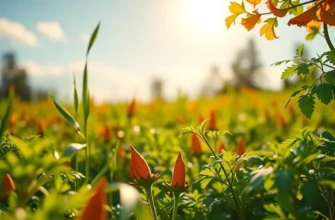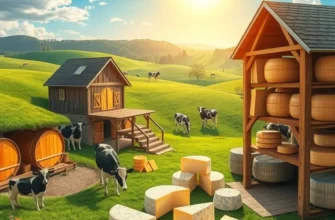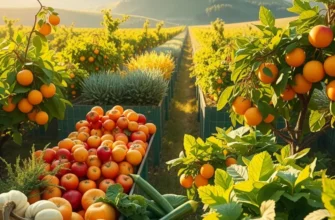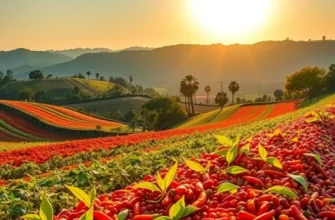Island nations boast diverse culinary traditions shaped by geography, culture, and history. From the Caribbean to the Pacific, each island presents a unique approach to food, influenced by local ingredients and cultural heritage. This exploration invites food enthusiasts to embark on a flavorful journey across different island cuisines, discovering how these vibrant cultures express themselves through cooking.
Culinary Treasures of the Caribbean

The Caribbean cuisine stands as a vibrant testament to a rich cultural exchange, blending Taino, African, French, Spanish, and Indian culinary traditions. This fusion creates a tapestry of bold, soulful flavors that reflect the islands’ dynamic heritage. Distinctively spiced jerk chicken epitomizes this blend, bringing together African cooking techniques like slow smoking with native spices such as allspice and Scotch bonnet peppers.
One of the most iconic dishes, jerk chicken captures the heart of island cooking. It derives its fiery heat and depth from a marinade of spices, transforming tender meat into a smoky, tantalizing feast. Often grilled over pimento wood, the chicken absorbs a distinctive smoky flavor that is both heartening and invigorating.
Another staple, the beloved rice and peas, showcases how simple ingredients can shine when paired with thoughtful techniques. This dish harmoniously marries kidney beans and rice, simmered slowly with coconut milk, thyme, and garlic. Each ingredient enhances and complements the others, creating a savory, comforting side well-suited to any main course.
Curry goat, a dish influenced by Indian settlers, typifies the island’s ability to adapt foreign recipes using native ingredients. Goat meat, slowly cooked in a fragrant curry sauce with ginger, garlic, and Scotch bonnet peppers, achieves a tender, succulent richness. The aromatic blend of spices highlights the savory depth and intensity found in Caribbean cooking.
Desserts in the Caribbean often revolve around coconut, a vital ingredient on the islands. Coconut drops, small cakes made with shredded coconut, ginger, and spices, merge sweetness with a delightful crunch. Meanwhile, the traditional rum cake, infused with dark rum and packed with dried fruits, offers a dense, flavorful indulgence that is synonymous with Caribbean festivities.
Cooking techniques in the Caribbean wield the power of open flames and slow cooking to draw out intrinsic flavors. Grilling over an open flame imbues meats and seafood with a robust smokiness that enhances their natural flavors. Meanwhile, stews and soups, simmered for hours, allow rich flavors to meld and deepen, resulting in dishes that are as nourishing as they are flavorful.
As you explore these culinary delights, consider the role that fresh, local ingredients play in shaping these dishes. The importance of locally-sourced fish, fruits, and vegetables cannot be overstated, providing an authenticity that is integral to each bite. For more on enhancing flavors without added salt, explore flavor boosters.
Embarking on a culinary journey through the Caribbean invites you to savor the islands’ spirited fusion of flavors, aromas, and cultures. It is a region where every meal is a celebration, offering a chance to connect deeply with the diverse heritage and exuberance that define Caribbean life.
Pacific Inspirations: The Flavors of Oceanic Islands
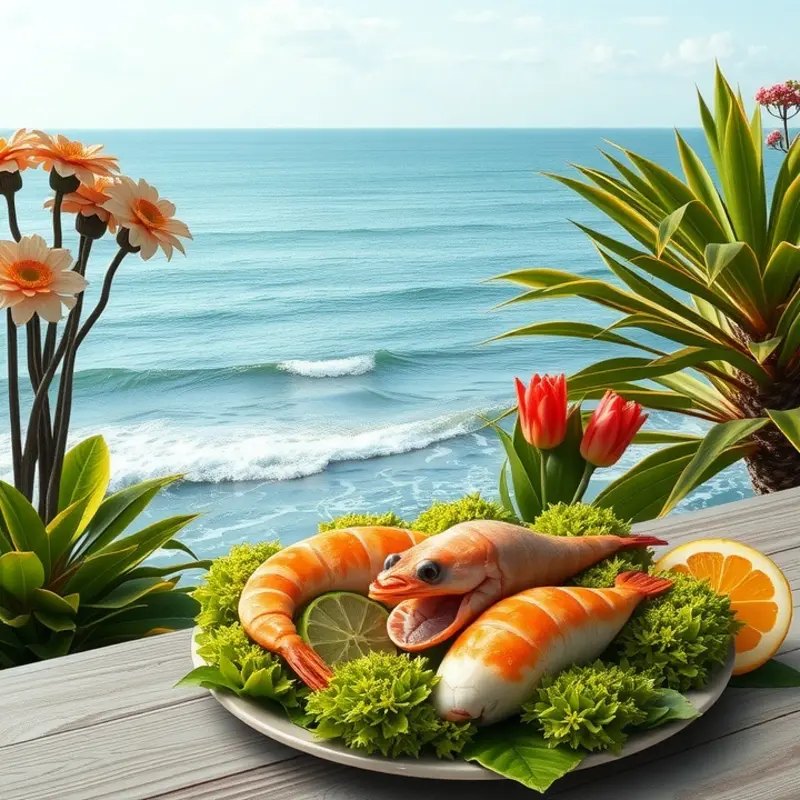
The Pacific islands boast a culinary mosaic, weaving the land’s bounty with the sea’s richness. In Hawaii, the traditional ‘imu’ or stone oven technique exemplifies this harmony. Whole pigs are wrapped in banana leaves and placed over hot stones, a process that requires patience and respect for natural ingredients. The result is tender, smoky meat, a testament to communal ceremonial feasting.
Hawaiian cuisine also celebrates fresh fish, particularly in dishes such as poke. Traditionally, poke consists of raw fish marinated with local sea salt, seaweed, and roasted kukui nut, offering a savory essence of the ocean. The modern poke bowl adds creative twists, incorporating tropical fruits like pineapple, avocado, and creative sauces, highlighting the island’s fusion with contemporary trends.
In Fiji, the culinary scene reveals the embrace of tropical staples. Root vegetables like cassava and taro are revered, often cooked in ‘lovo,’ an earthen pit similar to the Hawaiian ‘imu.’ These ingredients are paired with coconut-based sauces and local greens. Fijian kokoda, a traditional ceviche-like dish, showcases freshly caught fish marinated in citrus and coconut milk. This delicacy reflects the island’s balance of flavors and contrasts.
Tahiti brings lighter notes to the Pacific culinary palette. Here, the ‘poisson cru’ reigns supreme. This dish features raw tuna mixed with lime juice, coconut milk, and diced vegetables. The result is refreshing and vibrant, resonating with the colors and vitality of the island’s landscapes.
Across these islands, sustainability remains a cornerstone of local cuisines. Chefs advocate for regionally sourced ingredients, reducing the environmental footprint and preserving biodiversity. Traditional farming methods coexist with innovative practices, ensuring a respectful and harmonious relationship with nature.
Modern chefs are revitalizing Pacific cuisine by blending ancient methods with global influences. They introduce unique elements while respecting the essence of traditional dishes. This cultural exchange is reflected in the mindful preparation of seafood and other resources, as highlighted in speedy seafood prep, showcasing efficient and sustainable culinary practices.
By celebrating their heritages and embracing new culinary horizons, the islands continue to mesmerize with their vibrant flavors and sustainable, respectful cooking ethics. The Pacific islanders offer more than just dishes; they share a story of land, sea, and culture intertwined in a profound gastronomic legacy.
Final words
The culinary traditions of island nations provide a treasure trove of flavors, techniques, and stories that immerse food enthusiasts in an exploration of culture and identity. From the spice-rich kitchens of the Caribbean to the ocean-reliant cooking of the Pacific islands, these cooking styles reflect the unique heritage and biodiversity of their environments. As you engage with these cuisines, consider not only the vibrant tastes but also the social and environmental connections inherent in each dish. This culinary journey encourages appreciation for the intricate pathways that lead from farm to table, celebrating diversity, sustainability, and the shared human experience in the world of food.


